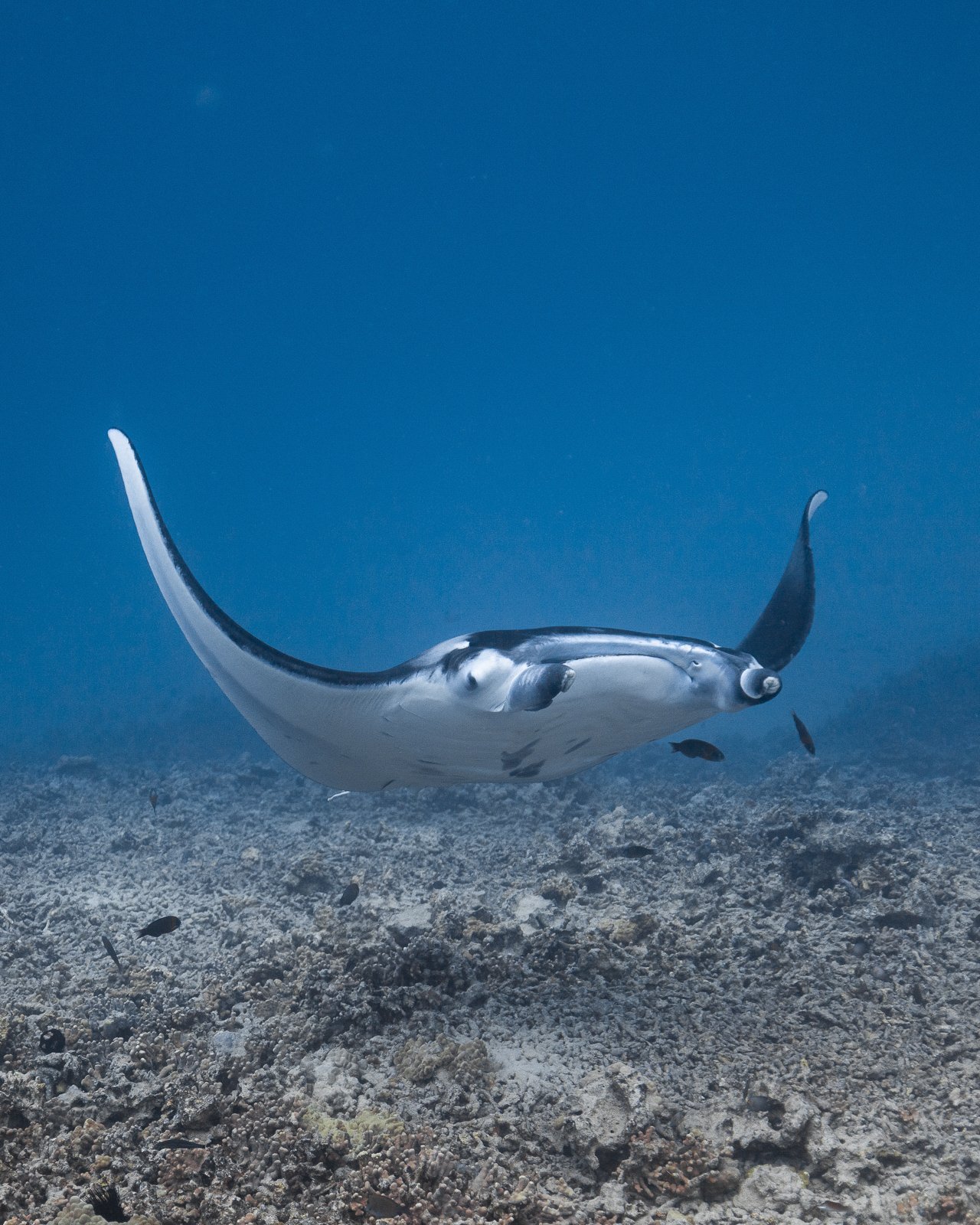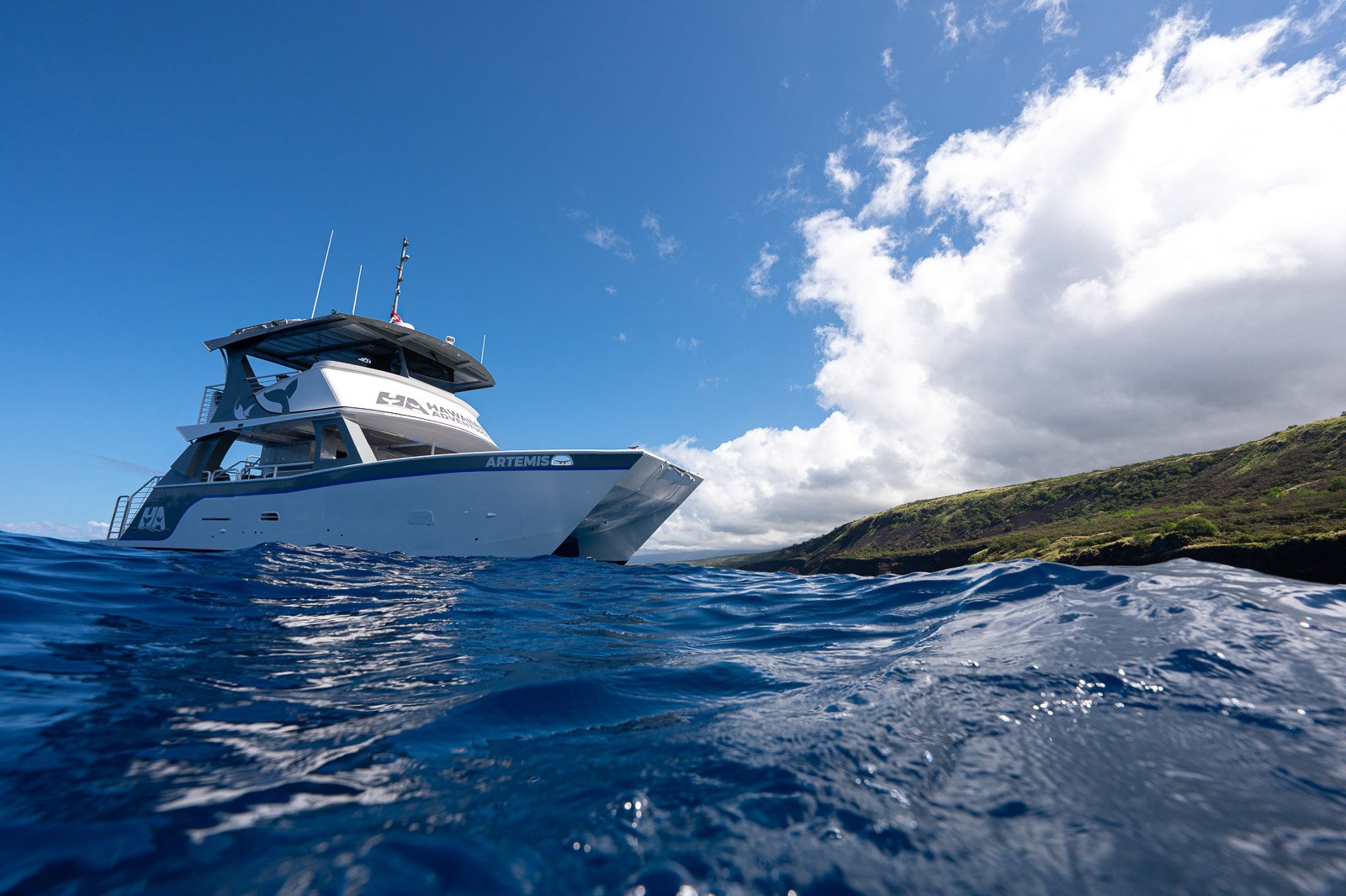
Rays
Reef Manta Rays
Reef mantas are what we most commonly see in the waters around Kona. While their size may be intimidating, mantas are gentle filter feeding fish that lack teeth and barbs. They specialize in consuming zooplankton, tiny carnivorous beings, and they feed using two cephalic lobes located on either side of their mouth. During daytime, they can often be seen feeding in natural eddies and current lines which trap plankton. At night, both natural and ambient light serve to attract plankton. Manta rays belong to the group of cartilaginous fish known as elasmobranchs, making them closely related to sharks, skates and other rays. They have the largest brain, and brain to body size ratio, of any fish, and have been proven to be able to recognize themselves in a mirror.
Stats
Scientific Name: Mobula alfredi
Length: 12-14 feet
Weight: 1,500 lbs
Diet: plankton
Lifespan: 40 years
Season: Year-round
Spotted Eagle Rays
Their Hawaiian name hihimanu means “magnificent” or “elegant bird”. They glide gracefully through the water and their movements have been compared to that of a butterfly. Their common name is in reference to the intricate spotted pattern that covers their dorsal side. This pattern serves as camouflage via countershading, and these spots can also be used to identify individuals via photo identification. Spotted Eagle rays are found in warm coastal waters around the world, including the shallow coastal waters of the Hawaiian Island chain. They live among coral and rocky reefs, but are also believed to migrate over distances of deep water. Spotted eagle rays are foragers, and will use their spade-like snout to help burrow into sand in search of food. If threatened, spotted eagle rays have venomous spines in their tails, but unless provoked they are considered a docile species.
Stats
Scientific Name: Aetobatus narinari
Length: approx 8 ft ( 16.4 ft w/tail)
Wingspan: 10.8ft
Weight: 500+ lbs
Diet: molluscs, crustaceans & small fish
Lifespan: 25 years
Season: Year-round
More Whales, Dolphins, and Wildlife of the Kona Coast
The Kona coast boasts an incredibly diverse array of marine life. Venture with us out into the blue in search of graceful mantas, massive mola mola, schooling sharks, or one of more than a dozen species of toothed whales that traverse these island waters.
Kona Whale Watch Tours
Season: December - March
Duration: 2.5-3 Hours
Season: December - March
Duration: 2-2.5 Hours
Season: April - November
Duration: 3-4 Hours
Book Direct and Save
At Hawaiian Adventures Kona, we offer the best available rates to our guests who book direct. Take the hassle out of making reservations through third-party booking agents and you’ll receive the lowest discounted rate. You’ll also receive direct communication with our team of year-round, full-time crew with confirmation emails/text messages, tour reminder emails, and special promotions after your tour. Should your travel plans change, it’s much easier to modify a direct booking as opposed to a third-party booking. Book direct with Hawaiian Adventures Kona to get the best service and lowest prices!






